|
Everyone has experienced pain throughout their lifetime, it is an experience produced by the brain to protect you! But when it is persistent or chronic it is not fun, however it is more than likely not tissue damage being the major factor to your pain experience. So what is driving my pain? Think of yourself as a cup If you think of yourself as a cup, and in the cup you have all the stressors in your life that may be contributing to your chronic pain. Stressors can be anything from work stress, past history with pain, anxiety, physical stress, fear of movement, false beliefs and even lack of support. When we see a lot of these stressors in our lives, the cup gets too full, it overflows and we might get pain. How Do We Stop the Cup From Overflowing? We have two options to stop the cup from overflowing, we could decrease what's in the cup or we could increase the size of the cup. Decrease What is in the Cup To decrease what is in the cup we have to identify what stressors are in the cup first and then decrease the impact these stressors are having. Some strategies to do this are:
Increase the Size of the Cup To increase the size of our cup we again have to identify what is in the cup and then develop our ability to combat these stressors. Strategies include:
So ask yourself what's in your cup? What can I decrease? or how can I build a bigger cup? To help understand pain visit https://www.youtube.com/watch?v=C_3phB93rvI Izaac Boylan Accredited Exercise Physiologist
2 Comments
 Breast Cancer & Exercise Recently there has been an announcement about an exciting Australian research project that found that venom from honeybees could rapidly kill aggressive and hard-to-treat breast cancer cells. This is exciting news for our future, but what about people already with breast cancer, and undergoing breast cancer treatment? Here we discuss exercise and it’s benefits for females undergoing treatment. How common is breast cancer? Breast cancer is the most common cancer in women, with more than 13,500 cases diagnosed in Australia each year. One in eight women will be diagnosed with breast cancer by the age of 85. Thankfully almost 90% of those diagnosed will be disease-free five years after their diagnosis and therefore there are nearly 160,000 breast cancer survivors in Australia today. What are the common treatments for breast cancer Common treatments for breast cancer are surgery, chemotherapy, radiotherapy, hormone therapy and specific drug therapies. The side effects of treatments depend on the extent of any surgery, and on the dose and type of adjunct therapy. Some side effects include fatigue, hair loss, an increased percentage of fat and weight gain, nausea, sleep issues, joint and other types of pain, bone loss, ‘chemo brain’ (feeling vague), and fluid build-up that causes swelling in various body parts called lymphoedema. How does exercise help? Exercise can help to counteract some of the common side effects of treatment and last year was recommended by the Clinical Oncology Society of Australia as a standard adjunct therapy for all cancer patients. Read the position statement here. Exercise can help to decrease fatigue, improve body composition, assist in increasing or maintaining bone mineral density, improve mental health and generally helps to improve a person's quality of life. How much exercise? Most of the studies on exercise and cancer have focused on women with breast cancer. As a result of these studies, exercise guidelines have been developed: Females undergoing treatment or post treatment need to work up to moderate intensity exercise, starting with a very low intensity program and what the person can comfortably achieve, and then progress gradually. It is common to have exercise routine lapses due to side effects of treatment, and fatigue, and therefore the program may be re-adjusted up and down over time. A good rule to live by is that something is always better than nothing. The short term goal is to accumulate at least 30 minutes of exercise on at least three days each week - this volume has been found to lead to benefits. Depending on fitness and energy levels of the person, many short sessions may be needed to accumulate at least 30 minutes of daily exercise. Once a person can build up to, and then maintain, at least 30 minutes of exercise per session, then the next goal is to accumulate at least 150 minutes of exercise over one week. Both aerobic and supervised resistance training are safe and beneficial. Helpful tips for females undergoing breast cancer treatment starting an exercise program:
Lisa Parkinson Accredited Exercise Physiologist & Credentialled Diabetes Educator.  What is MND? Motor Neurone Disease or commonly known as MND is a neurological condition that affects a neurons ability to function properly. Neurons control the muscles that allow us to speak, breathe, swallow and move and when affected by MND these muscles progressively weaken and waste away, as neurons begin to die. Those affected often losing function of their limbs and independence, although their mind and senses generally remain intact, often causing frustration and anger. What is a Motor Neuron? Neurons come in many sizes and types, but a motor neuron controls our muscle contractions. They are able to do this by receiving messages from the spinal cord and sending them through to the muscles, skin or glands that are required to complete the desired action. MND (known as ALS in the US) causes a neuron to gradually deteriorate and eventually die, affecting its ability to transfer messages from the spinal cord to the muscles. As a result, this decreases the body’s ability to control a muscle or contract it, which results in a loss of strength and gradual wasting away. What are the symptoms of MND?
The severity and types of symptoms vary from person to person and also depend on how far progressed the disease is. Some early symptoms can include;
As the disease progresses, symptoms will become more prevalent, these may include;
Who does it affect? MND can develop in any individual and there is no known cure or treatment for this disease. In Australia there are two people diagnosed with MND and two who die from MND, everyday. Once diagnosed with MND the average life expectancy is 2.5 years. Of those diagnosed with MND in Australia, 60% are male and 40% are female and roughly 58% of people diagnosed are under the age of 65. So how can exercise help? As MND progresses the patient’s ability to walk and mobilise decreases, due to significant decreases in muscle strength, joint stiffness and an increase in fatigue. Engaging in regular and structured physical activity enables individuals to continue mobilising and maintain their independence for as long as possible. Focusing on increasing joint range of motion and mobility, increasing muscular strength, specifically in the legs and arms and maintaining both static and dynamic balance to prevent falls from occurring, are all crucial elements in prolonging function in those with MND. A recent study reported that upper leg strength decreases by 35% one year after MND diagnosis, although when specific lower limb strength training was regularly completed, their full strength was maintained for up to 10 months longer after their diagnosis. As a result, this maintained their function for an extended period and provided an improved state of mental health and quality of life. By Aleisha Michael Accredited Exercise Physiologist Bodyweight exercises are a great way to stay in shape at home. They’re effective, they do not require any special equipment and you can do them anywhere, making them a perfect solution for people without equipment or when you are on holidays. Below are 3 body weight exercises that you can do at home with a couple of variations of each exercise for different fitness levels. This is general advice and these exercises may not be suitable for everyone, so please pick and choose which exercise and which version might be best for you, or consult an exercise physiologist for individualised exercise prescription. Squat Most of us know how to perform a squat and there are lots of variations depending upon your ability. Level 1 of the squat is the chair stand.
Next level is to undertake a squat tap.
Once you have mastered this, you can progress to the full squat.
The second exercise is the push up, again beginner through to advanced versions. Beginner level is a wall push up
Those familiar with push ups might also undertake them on the floor with hands and knees in a box position, or in a full push up position on hands and toes. Again undertake 3 sets of 10 repetitions slowly. The final exercise is the tricep dip. This one targets the tuck shop arms or the tricep muscle group at the back of the upper arm.
Beginner: Intermediate: Advanced: Lisa Parkinson
Accredited Exercise Physiologist & Credentialled Diabetes Educator. |
AuthorSLisa Parkinson Archives
July 2024
Categories
All
|

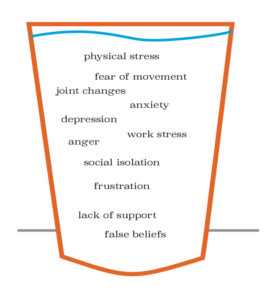
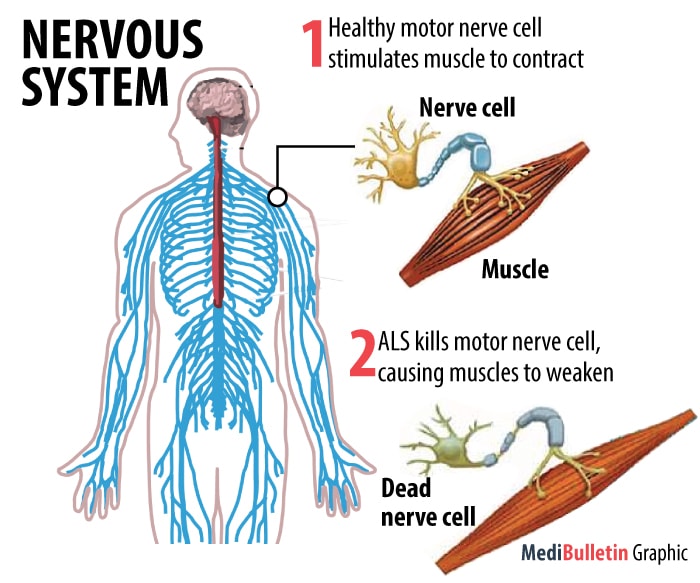
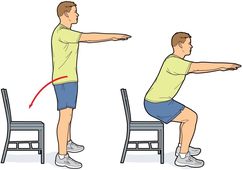
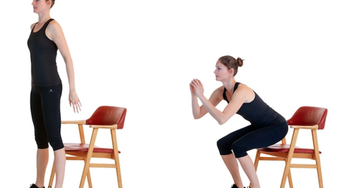
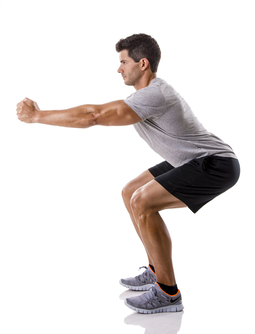
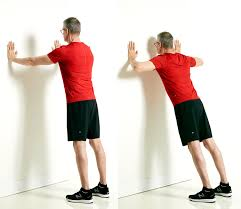
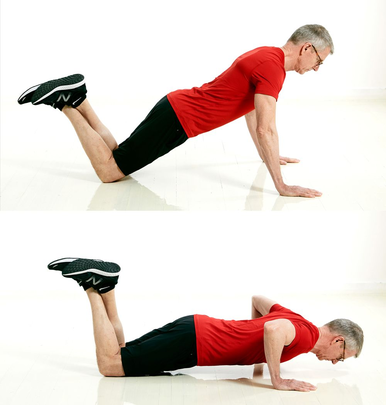
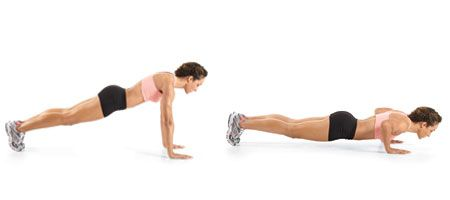
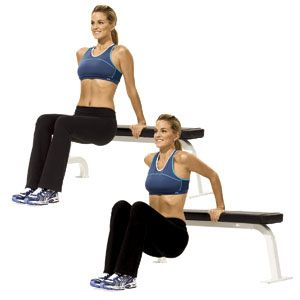

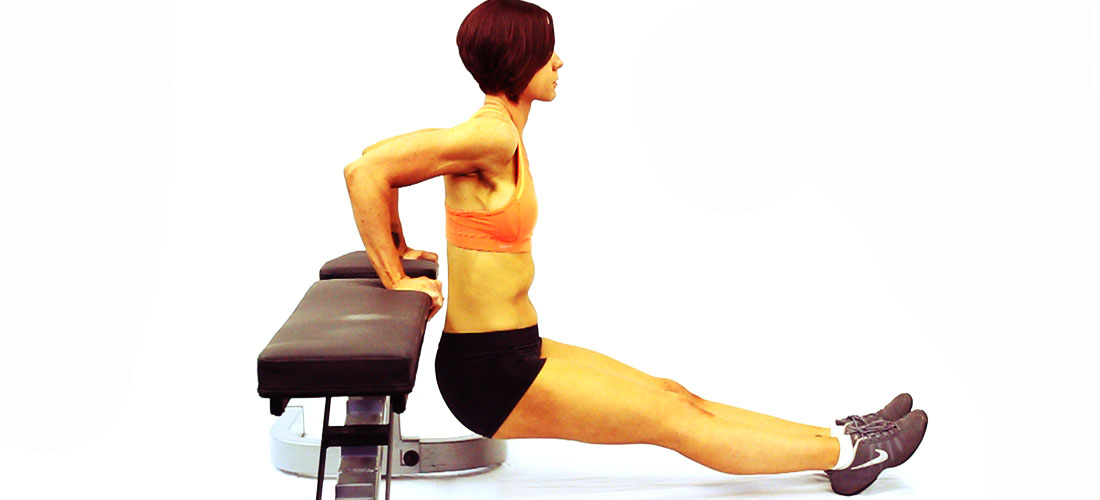
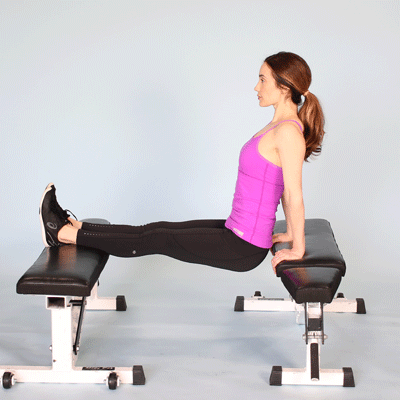
 RSS Feed
RSS Feed